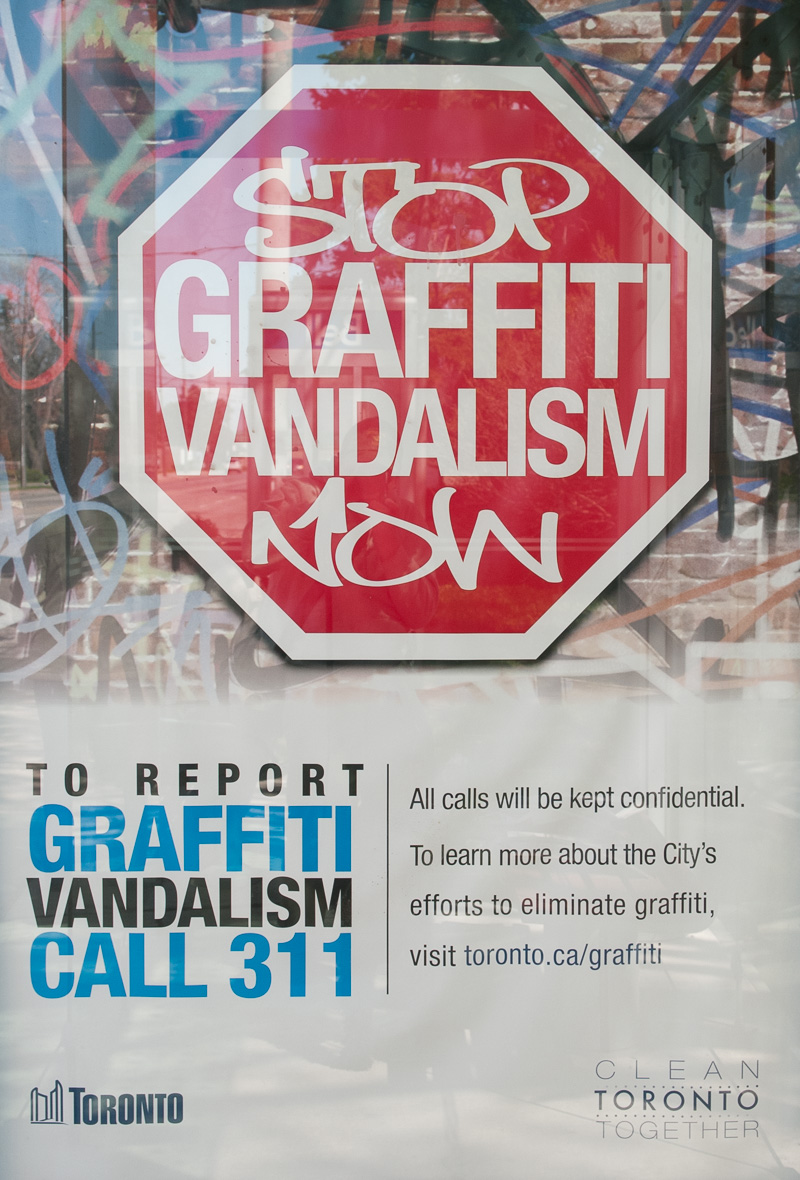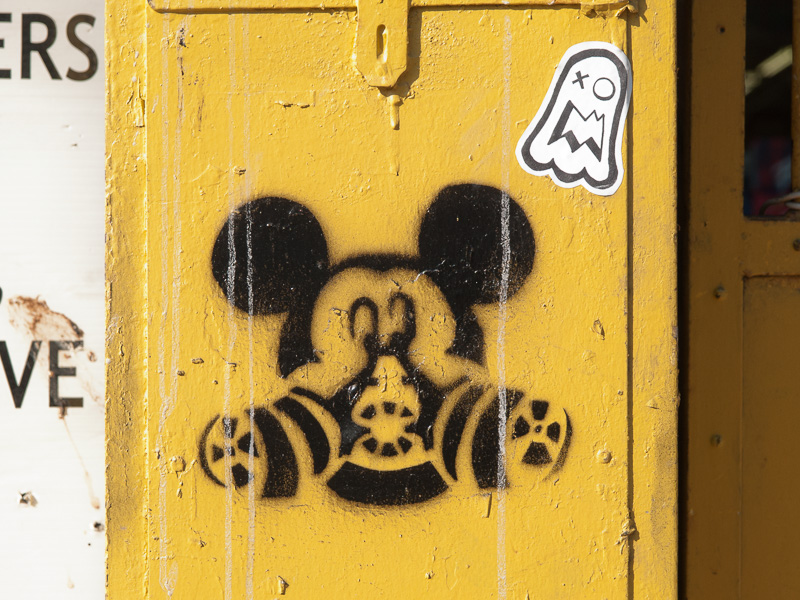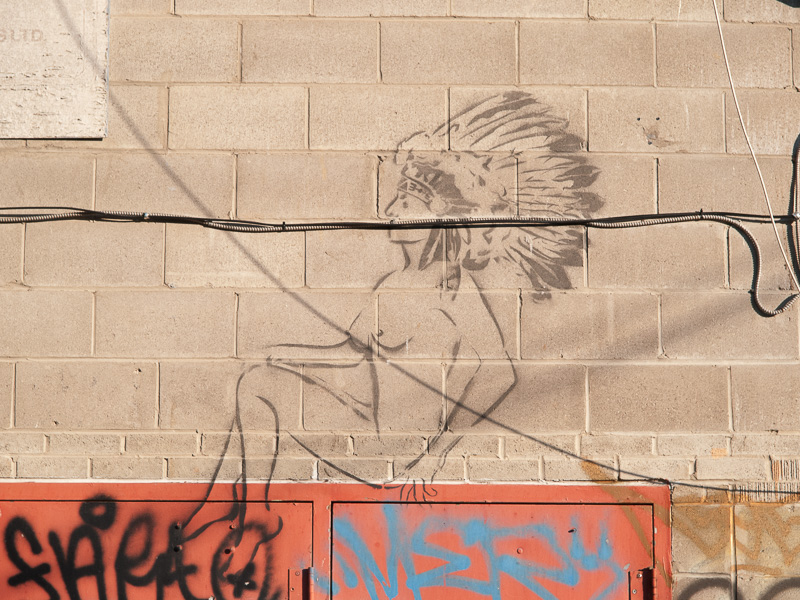After being away for a month, I returned home to Toronto with a question burning on my lips: So how’s Rob Ford’s War on Graffiti going? On Friday, I went downtown to get some answers. I can’t speak for the city at large because I sampled only a narrow sliver of streets downtown. The reason I sampled only a narrow sliver is that there was so much to see. I didn’t have time to go anywhere else. I fell down the rabbit hole. The short answer is: not well; there’s graffiti everywhere. In fact, Rob Ford’s declaration of war may be the best thing that ever happened to Toronto’s graffiti scene.
Authorized
There are two main categories of street art: the stuff that’s authorized by city council, and everything else. A good example of authorized street art is a mural of Miles Davis above the For Life Natural Foods store at the corner of Augusta Ave. and Nassau St. As a bonus, there are speakers blaring Sketches of Spain and Kind of Blue into the street, which is fine if you like Miles Davis (and I do like Miles Davis) but not so fine if you live in the neighbourhood and jazz isn’t your thing. An employee of the store told me the owner commissioned the mural with city council’s blessing to cover a plague of graffiti on his building.

Unauthorized
A good example of unauthorized street art is a wall featuring a portrait of Rob Ford with the caption: “We can’t afford this.” Not far from the piece is a hand with all the fingers up except the middle one. I take this as a sly jab at Rob Ford who has a reputation for giving people the finger as he drives by in his car.
Power
Although I hesitate to use “traditional” and “postmodern” side by side, here goes: the traditional pomo analysis might say this is another illustration of the interplay between power and culture. Power manipulates the mechanisms of legitimation to produce what counts as proper expression in our local culture. The mayor and his cronies deem certain expression vandalism and an assault against private property and this authorizes the erasure of expression that began its existence as social criticism. The word censorship comes to mind.

Occupy Ford Nation
There is great irony in the timing of Rob Ford’s little war. This Saturday, Toronto will play host to an OCCUPY protest. Ford has cast his lot with big money. He wants to privatize everything. He wants to throw all our social services to the wolves of an unregulated economy. Isn’t it ironic that he cannot help himself when it comes to regulating certain forms of expression. Why not privatize street art too? Leave it, like everything else, to play out its life in a deregulated privatized street art economy? But no. He wants to quash it all. His failure gives me hope. Street art gives me hope. It reminds me that ideologues like Ford have less control than they pretend to.

Stop Making Sense
It’s worth looking at the rationale behind city council’s legitimating power. What reasons justify some forms of expression over others? Especially when, at least superficially, authorized and unauthorized look the same? Here is my theory. According to city council, legitimate street art is legitimate because it makes sense. Art makes sense if (a) it has a readily discernible message and (b) that message contributes to the local economy. The Miles Davis mural makes sense because everyone can see that it’s Miles Davis and it promotes a local business. The Rob Ford mural doesn’t make sense because … well … it was probably put there by some goddamn communist.
As for the naked chief with boobs, that just drives Ford et al. bonkers. Why the hell would anyone do that? It doesn’t mean anything? How is anyone supposed to make any money from it?
Then again, as people move to Occupy Wall Street, Bay Street and any other street where derivatives traders manipulate the global economy, it seems that senseless street art makes as much sense as anything else.
